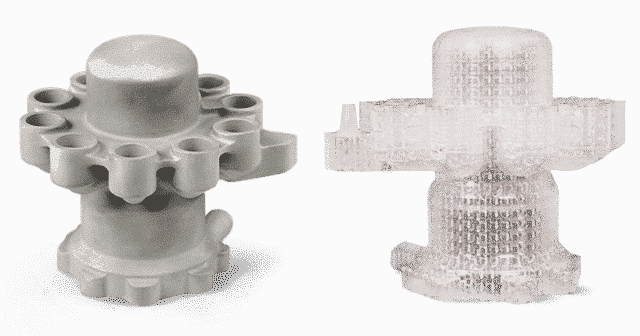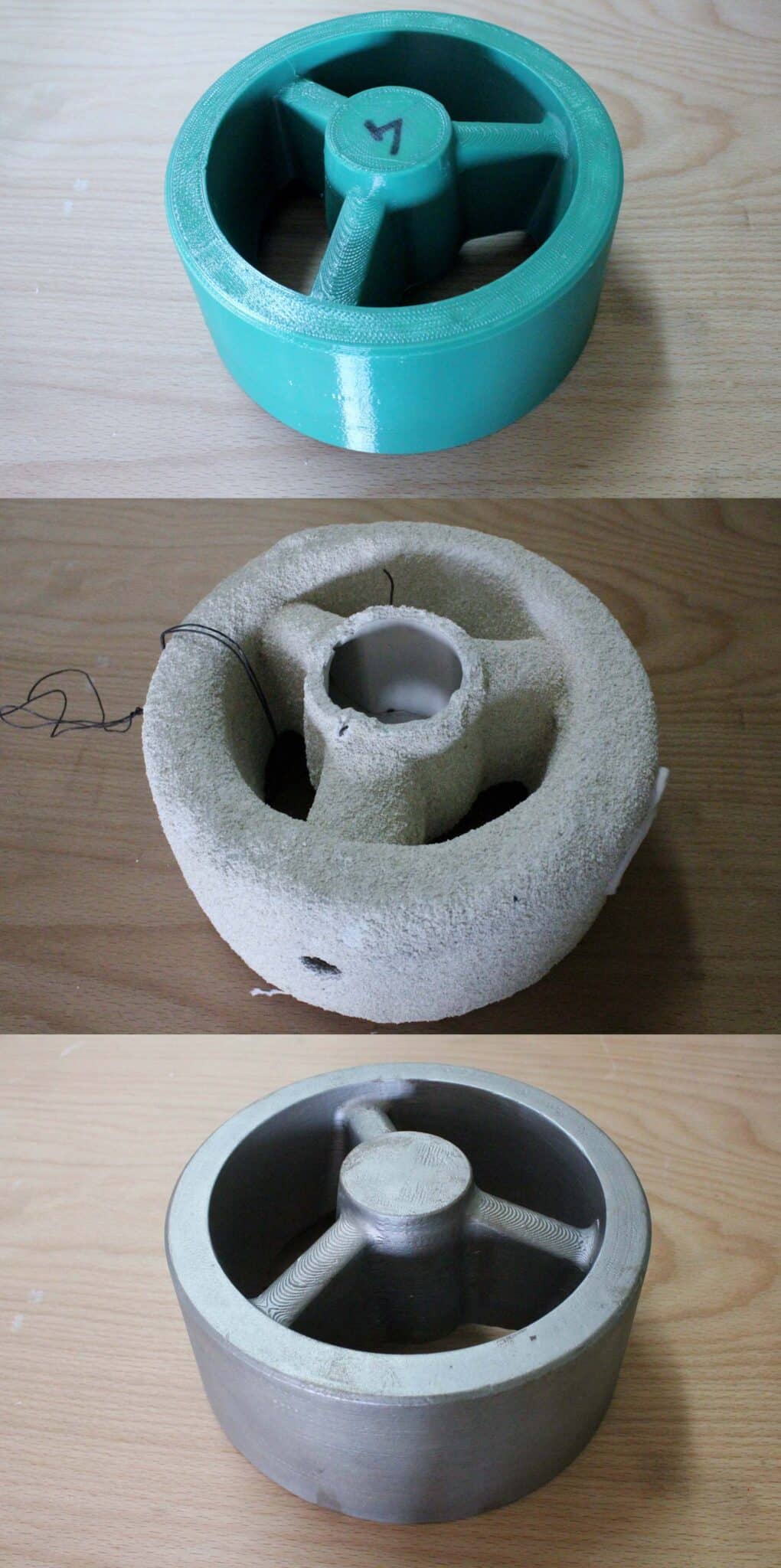Creating a mold or cast requires precision. To make a mistake – or to have second thoughts – can be expensive, both from a financial and a time standpoint. Every feature, every detail, every customization also comes at a price. Whether it’s for a one-off piece or mass production, molds and casts are a tricky matter.
That’s where 3D printing comes in.
Metal casting at foundries is one of many tried and true manufacturing processes that have been impacted by 3D printing. FacFox has more than 10 years of experience working with foundries, introducing the benefits to casting. It has led us to develop proprietary build styles and processes for superior 3D printed investment casting patterns and other important production applications such as custom tools and manufacturing aids.
Pros at a Glance
A particular advantage brought by 3D printing is that it enables further individual optimizations that make the vehicle unique. For instance, parts can be provided with inscriptions or replaced by lighter variants. Once the components have been digitalized, they can also be reproduced quickly and easily at any time.
Sand casting:
- Sand casting molds and cores are produced with a 3D printer
- Reduces tooling costs, particularly for small batch sizes
- Also suitable for complex geometries with undercuts
- Shorter production times
- Less reworking of the unfinished castings
- With 3D printers, sand molds can be produced rich in detail and precisely in a short period of time using CAD data
- Parallel 3D printing of sand molds and tools enables fast and cost-effective optimization
Investment casting:
- 3D Printed plastic models replace traditional wax models, which are produced using injection molding tools
- Plastic models manufactured in the 3D printer are available faster and cheaper to produce
- Considerable time saving
- Cost-effective production without tools
- Space-saving as no tools need to be stored
- Complex shapes possible
The Applications
3D printed molds and toolings open up new possibilities on manufacturing-floor productivity. 3D printing processes are easy to implement and offer a wide variety of materials to support a part’s requirements while eliminating cost, lead time, and design barriers to adopting manufacturing aids on the shop floor.
Jigs & Fixtures
These often overlooked, but critical components for quality production often require several cycles of design and prototyping to attain the required performance. 3D printing provides a substantially simplified and cost-effective fabrication process for productivity, efficiency, and quality.
Composite Tooling
Utilize 3D printing to create lightweight, agile, low-cost composite tools in days. Incorporate greater functionality and geometry complexity for light-weight layup tools, machining fixtures, trim tools, and drill jigs.
Forming Tools
Reduce lead times to forming tools with additive manufacturing. Build tools in days with built-in porosity and increased tool complexity to reduce thermal mass and control thermal gradients. 3D printing’s innate design freedom allows engineers to design for the end product and make design changes quickly.
Investment Casting Patterns
Increase foundry business by making investment casting patterns more viable for your customers. 3D printed investment casting patterns significantly reduce lead times and eliminate high tooling costs. With excellent pattern accuracy and repeatability at less expense than conventional methods, the patterns translate to higher yields during casting.
The Effective Tool-less Solutions for Investment Casting Patterns
SLA
As an alternative to wax and wood, SLA builds patterns with a UV laser that cures and solidifies thin layers of resin. FacFox builds SLA investment casting patterns in a nearly hollow structure with a sparse internal lattice structure and thin walls. This proprietary build style translates to proportionately less ash and minimized thermal expansion forces during flash firing.
FDM
The benefits attained with this most regular printing method are obvious: lower development costs, fast identification, and reduction of design errors, a decrease of the post-machining cost and naturally a higher speed in the pattern implementation. Moreover, the patterns printed with PLA are biodegradable and they do not release toxic residues in the environment.
MJP
It can produce hundreds of patterns at a significantly lower cost and in less time than traditional pattern production for low to medium-volume jobs. Delivering quality, accuracy, and repeatability, it generates wax patterns that fit in existing investment casting processes, making it ideal for customized metal components, bridge manufacturing, and low volume production.
Case
Impeller for steel hydraulic pumps
The process, from up to down, starts from the implementation of a 3D printed disposable pattern and achieves the production of the component through the traditional foundry process.
Conclusion
FacFox offers a host of advanced manufacturing solutions for foundry customers including hybrid wax setters, wax pattern assembly jigs, straightening fixtures, pattern, and core inspection gauges, sand casting patterns, match-plates, and core-boxes.
Our engineers are experts in examining a customer’s unique operations and identifying areas that custom jigs, fixtures, and other manufacturing aids could transform your production floor.
Even with a centuries-old manufacturing process, 3D printing can widen foundry customer base by offering compatible processes and custom tools.



